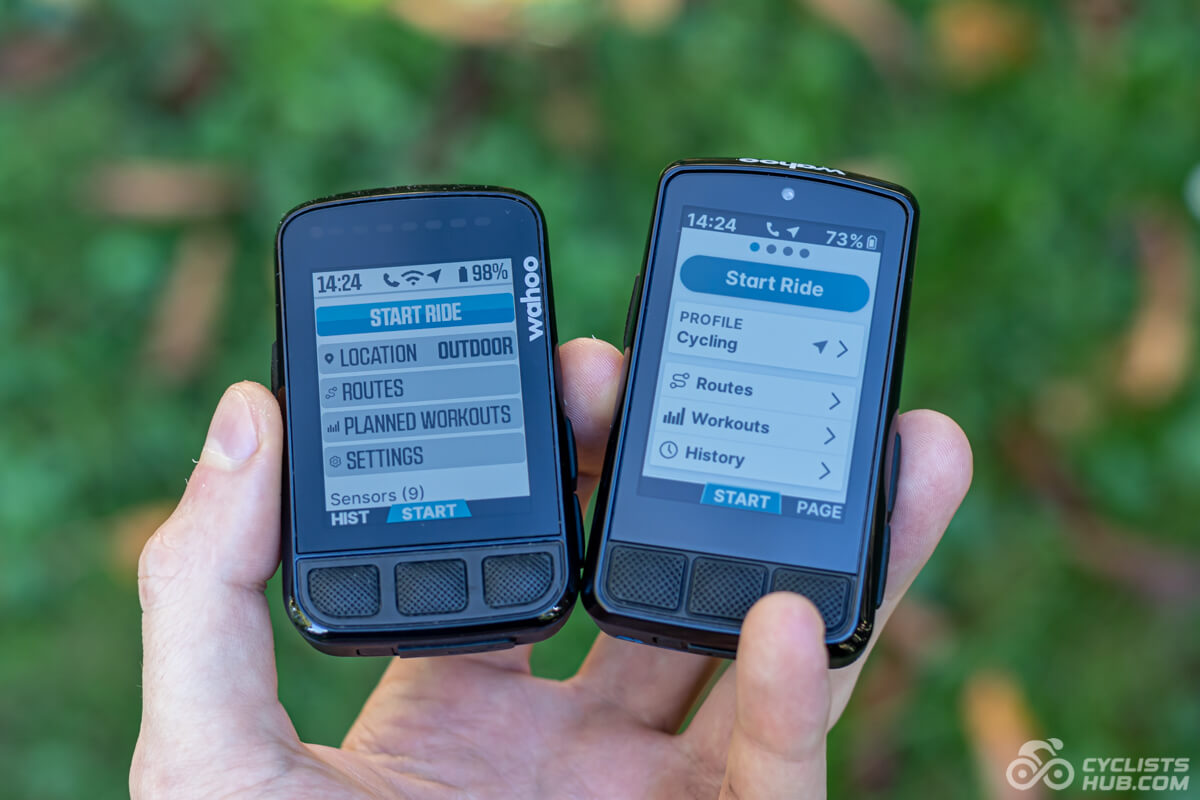Cyclists Hub is supported by its readers. We may receive a commission if you buy products using our links.All content on Cyclists Hub is written by humans, not robots. Learn More
I’ve been using Wahoo ELEMNT BOLT 2 and BOLT 3 for months, and in this comparison, I share everything I’ve learned to help you decide which one to buy. You will also learn about their differences, pros, and cons, and I will also compare them with other bike computers, such as the Edge 540, Edge 840, Edge 1040, and more.
KEY TAKEAWAY
The main difference between the Wahoo ELEMNT BOLT 2 and BOLT 3 is that the BOLT 3 has much better battery life and a redesigned user interface. However, it lost something of the user-friendliness of the BOLT 2.
BOLT 2 is still one of my all-time favorite bike computers, mainly thanks to its simplicity. The BOLT 3 loses against its main rival, the Edge 540, so I recommend buying the ROAM 3 instead because of its touchscreen.
You can continue reading for more information or buy BOLT 2 here (also available on amazon.com).
ELEMNT BOLT 2 vs. 3: The Basics
Here is a summary of the main features and differences between the BOLT 2 and the BOLT 3.
| Feature | ELEMNT BOLT v2 | ELEMNT BOLT v3 |
|---|---|---|
| Screen size and resolution PPI | 2.2″ (240×320px) 182 PPI | 2.3″ (480×720px) 376 PPI |
| Touchscreen | No | No |
| Buttons | Easy to press | Easy to press |
| Display colors | 64 | 16 mil. |
| Claimed battery life Real battery life | 15 hours 11 hours¹ | 20 hrs 26.7 hrs |
| Dimensions | 77.5×47.2×21.3 mm 3.1×1.9×0.8 in | 83.5×47.2×24 mm 3.3×1.9×0.9 in |
| Weight | 68g | 84g |
| Storage | 16GB | 32GB |
| Start-up time | ∼35s | ∼33s |
| Mounts in the box | Out front aero mount Stem mount | Out front aero mount Stem mount |
| Smart navigation (rerouting) | Yes | Yes |
| Multi-band GNSS | No | Yes |
| Connectivity | ANT+, Bluetooth, Wi-Fi | ANT+, Bluetooth, Wi-Fi |
| Charging | USB-C | USB-C |
| Crash/incident detection | No | No |
| More info | Wahoo ELEMNT BOLT v2 Review | Wahoo ELEMNT BOLT v3 Review |
| Buy | Check Price Check Price (Amazon) | Check Price Check Price (Amazon) |
¹Based on my unscientific testing – multiple rides with multiple connected sensors (HR, power meter, radar), and navigation turned on during about 30% of rides. Auto brightness on.
ELEMNT BOLT 2 vs. 3: Features Comparison and Differences
Below, I compare the most significant differences between the BOLT 2 and BOLT 3.
- BOLT 3 has a 0.1″ larger display (2.3 vs. 2.2″) with higher resolution (376 vs. 182 PPI) and more colors (16 mil. vs. 64)
- BOLT 3 is heavier and larger
- BOLT 3 has a longer claimed (and real) battery life (20 vs. 15 hours)
- BOLT 3 has double the storage (32 vs. 16 GB)
- BOLT 3 supports multi-band GNSS
- BOLT 3 allows you to do more actions (e.g., pairing new sensors) on the device
- BOLT 3 is more expensive
Physical Dimensions & Weight
BOLT 2 and 3 have similar dimensions, but BOLT 3 is taller and 16g heavier.










They are among the smaller head units, so you will appreciate them if you care about compactness. They are ideal if you just care about seeing the most important metrics and logging your activities. They will be able to navigate you, too, of course, but navigation is not their main selling point (more about it later).
Ease of Setup
To set up both of these bike computers, all you have to do is scan a QR code. If you have already been using a Wahoo ELEMNT bike computer, its settings, such as data pages and data fields, will download from the cloud; however, you will need to pair your sensors again. This is where Garmin has an edge, because it also keeps sensor settings.

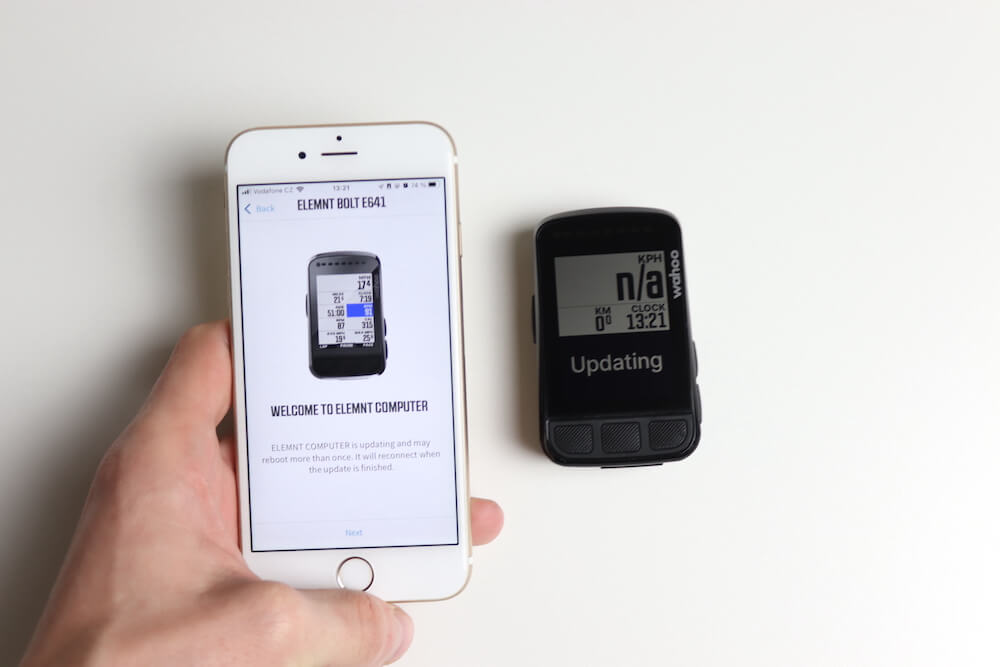


Many settings are not available on the head unit, and you must use the Wahoo smartphone app. These include changing the data pages and data fields, as well as a few additional options. The BOLT 2 originally used the Wahoo ELEMNT app, but it is also now customizable via the new Wahoo app.
Winner: It’s a draw
Display
The 2.2″ display size of the BOLT 2 is 0.1″ smaller than that of the BOLT 3 (2.3″). Both are non-touchscreen and are supplemented by physical control buttons. Their resolution differs, though. BOLT 3 offers twice as many pixels per inch (PPI) as the BOLT 2 (376 vs. 182 PPI), making it appear sharper in close-ups. It can also display more colors (16 million vs. just 64).
Considering the price increase of BOLT 3 and a relatively small price difference from ROAM 3, I think ROAM 3 is a better choice, thanks to its touchscreen (and a few other extra features).
The readability of both BOLTs is similar, but marginally better on BOLT 2. The BOLT 2 has a slightly less reflective display in direct sunlight, but in most scenarios, readability is almost the same (it’s really hard to capture it on camera). Still, it’s a win for the BOLT 2.
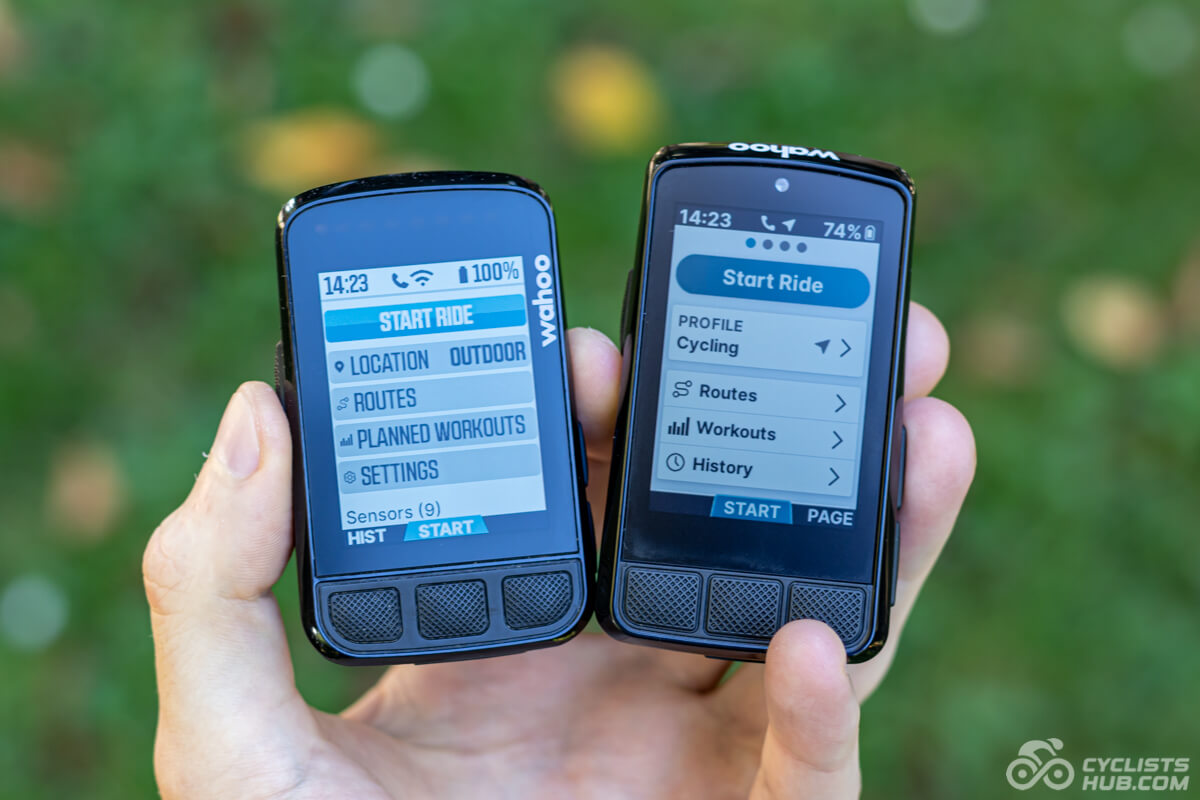
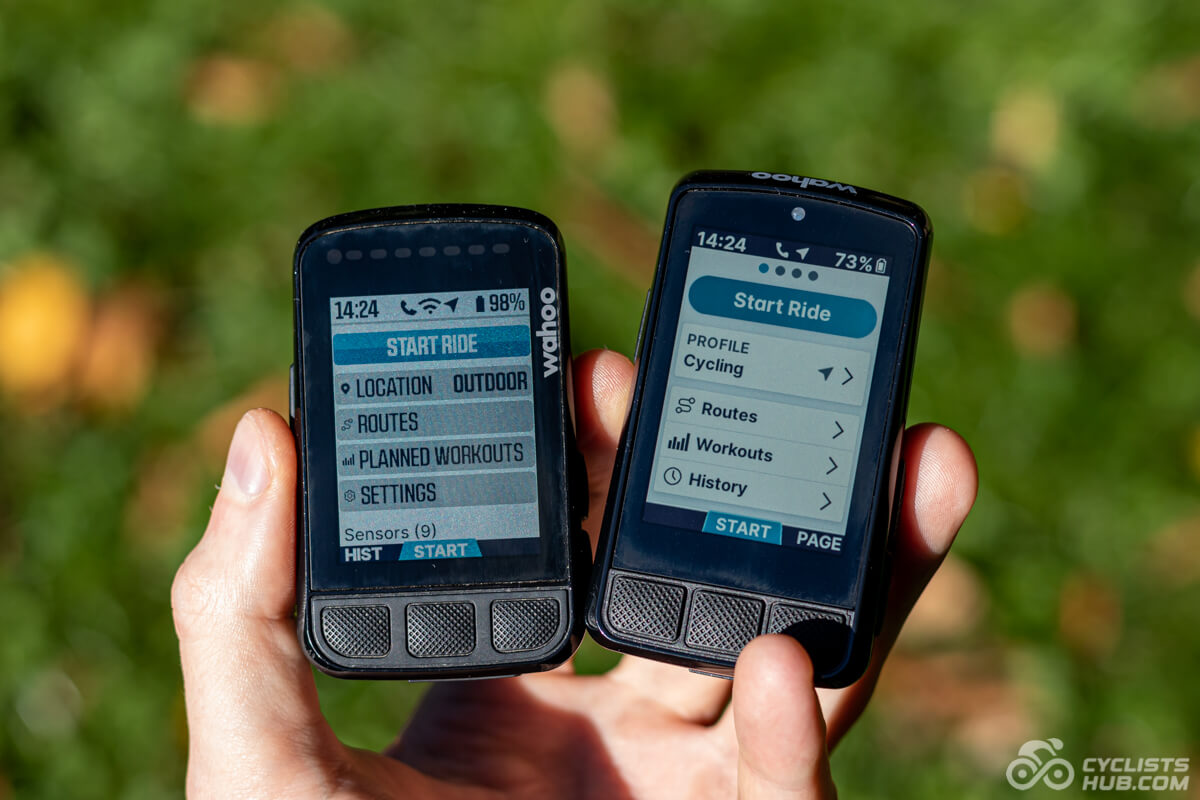
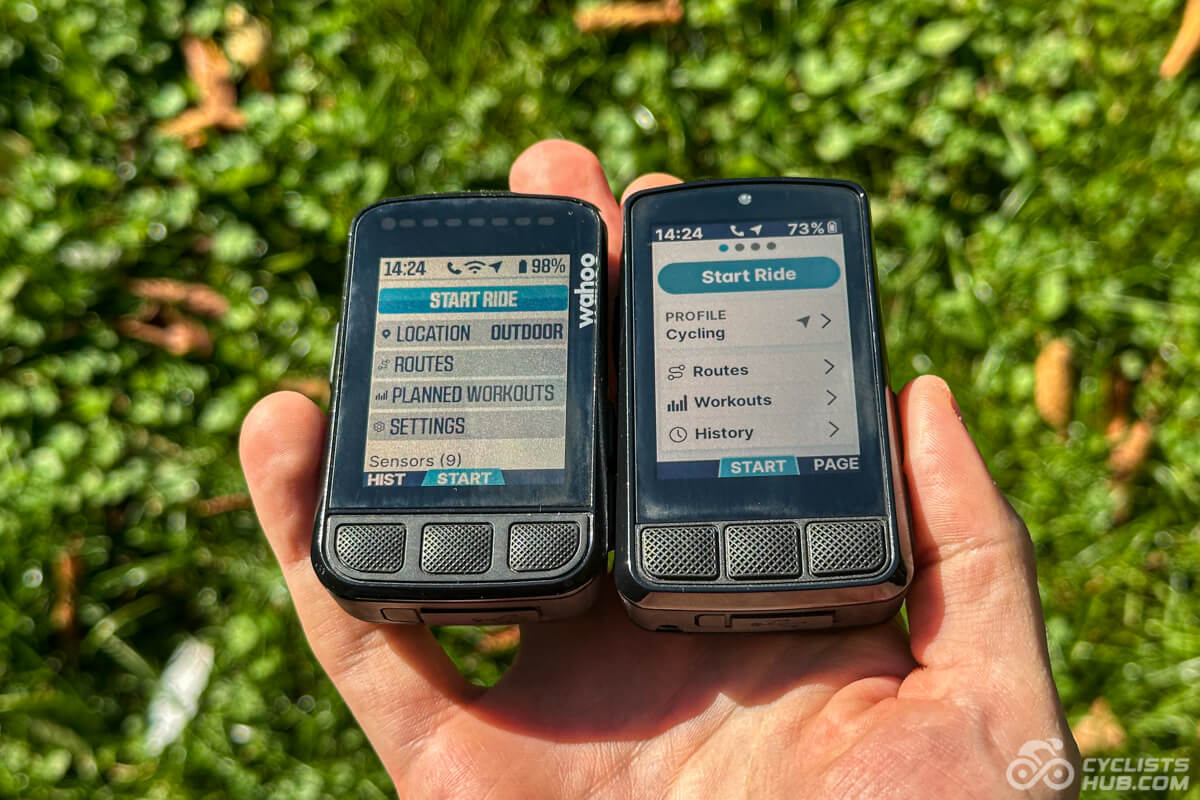
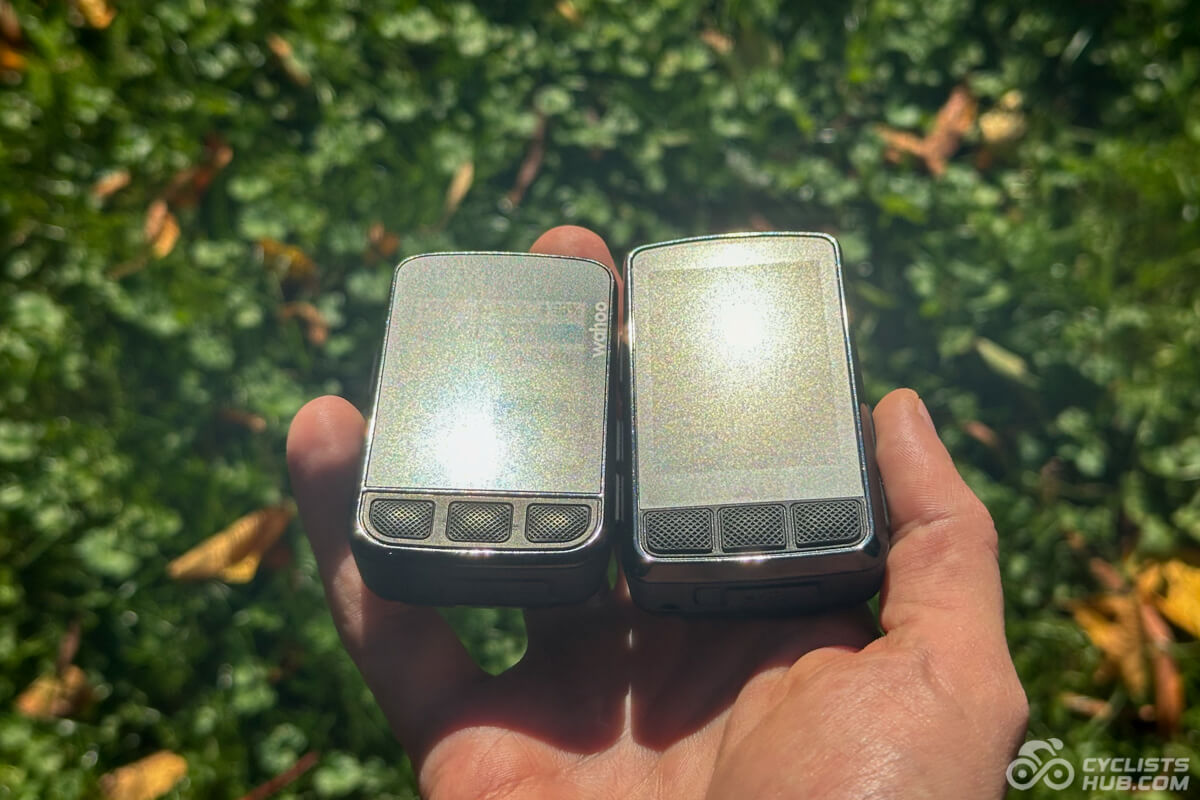

Winner: BOLT 2
Also available at rei.com and amazon.com
Also available at amazon.com
Control & User Friendliness
The BOLT 2 is easier to control because its user interface is simpler than BOLT 3’s. However, it offers fewer on-device settings. Both of these head units are quite smartphone-dependent, meaning you need to carry a smartphone to change data fields, for example.
The position of the buttons and their tactility have remained the same; the only change is that the three main buttons of the BOLT 3 are now more prominent.


I loved BOLT 2. I used it as my primary bike computer for several months. I mainly needed to log my activities and occasionally use navigation, so it was perfect for me, as it wasn’t cluttered with unnecessary features. BOLT 3 is also easy to use, but since it offers more on-device options and has a redesigned UI (the same one as on the ROAM 3 and ACE), which is mainly designed for touchscreens, it feels slightly less intuitive, imo. Still, it’s easier to use than the Garmin Edge 540, for example.
On the other hand, as I mentioned above, some operations require the smartphone app, while we are still discussing button-based devices. Some actions, like browsing maps, are a pain, so it’s easier to just take your phone out of your pocket.
In summary, I call the BOLT 2 a winner here, but some might argue that BOLT 3 is better because it allows you to do more actions on-device.
Winner: BOLT 2
Battery Life
The BOLT 2 has a claimed battery life of 15 hours, but it lasted only about 11 hours in my testing. The BOLT 3 results were more surprising. While the claimed battery life is 20 hours, it lasted 26.7 hours!
I used both bike computers on auto brightness settings (yes, both have ambient sensors for adjusting the brightness) and had the same set of sensors connected. The only difference with the BOLT 2 was that I used navigation for about 30% of my activities. Below, you can see a comparison of the claimed battery lives with some of the best bike computers. The BOLT 2 is below average, while the BOLT 3 is above average.
Winner: BOLT 3
Also available at rei.com and amazon.com
Also available at amazon.com
Maps & Navigation
Let’s be honest, BOLT 2 and BOLT 3 aren’t the best bike computers for navigation because they have a small screen, and not much of the map is visible when you also use some data fields. I recommend opting for larger head units, such as the Hammerhead Karoo 3, Garmin Edge 1040, or Edge 1050, for the best possible map experience.
However, both can recalculate your route if you deviate from the course. This is a feature that was not available on BOLT 1. Don’t take me wrong, if you have good eyes and don’t need to browse the map to find an alternative route, BOLTs can perfectly navigate you, especially if you have a planned route. The problem for me is that I would appreciate having other metrics (2-4 data fields, a map, and a route profile) on my maps page. But it’s difficult to display them on such a small screen. So, as always, it depends on your preferences.
The following images show BOLTs 1, 2, and 3, along with the level of detail they display on maps. BOLT 3 shows more detail than BOLT 2, but I find BOLT 2 easier to follow because it’s not as cluttered.

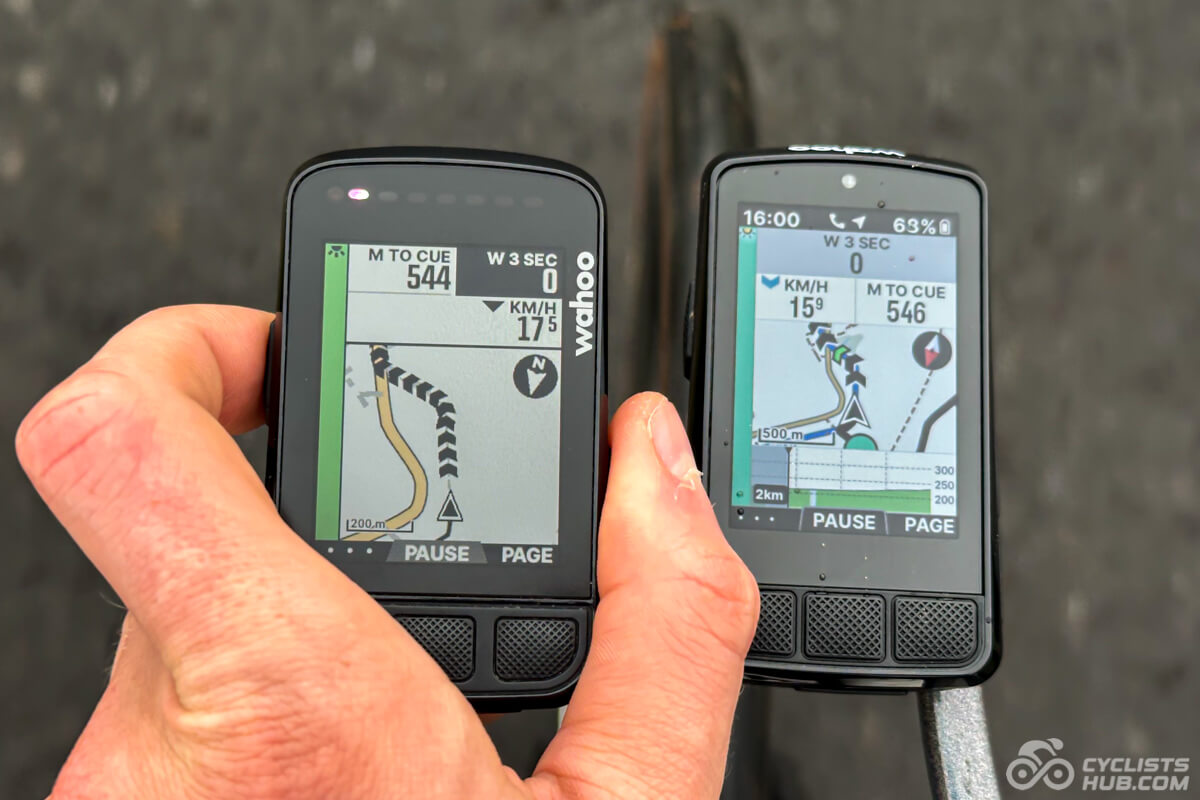
In terms of navigation, I must disclose that I didn’t test it on off-road terrain. I ride on paved roads with my road bike. I never had an issue with BOLT 2. When I went off route, it found a new path pretty quickly. Surprisingly, the BOLT 3 sometimes tried to take me via not-so-ideal roads (for example, not the shortest way to the end of the route or home). So, for this reason, BOLT 2 is the winner for me in this area.
Luckily, both units will allow you to update maps over Wi-Fi. Please note that BOLT 2 will fit fewer regions due to its 16 GB of storage capacity. BOLT 3 has double the storage, but if you are not a frequent world traveler, even the 16 GB should be enough because you can select individual countries, unlike on Garmin, where you choose from regions.
Winner: BOLT 2
Accuracy
Accuracy is an area where BOLT 3 surpasses its predecessor, as it features a Multi-Band GNSS system. This system enables the reception of satellite signals on multiple frequency bands and from multiple global systems simultaneously, resulting in greater accuracy.
I always test bike computers on my favorite forest segment. When you take a look at the following screenshots, you can see that BOLT 2 doesn’t match the forest road as well as BOLT 3. The second image is from a different segment, where the inaccuracy is even more evident. However, I must point out that for a completely comparable test, I would have to test both bike computers on the same day. It makes a difference if it is sunny or cloudy.




Winner: BOLT 3
Total score: Wahoo ELEMNT BOLT 2 (3) | Wahoo BOLT 3 (2) | It’s a draw (1)
My Verdict
While the BOLT 2 was the obvious choice in Wahoo’s previous lineup, the BOLT 3 is less appealing. The main reason is that the ROAM 3 offers more upgrades, especially the touchscreen and built-in speaker. The BOLT 3 offers improved battery life and enhanced accuracy compared to the BOLT 2. But with the price increase, it’s no longer a budget-friendly option.
I love the BOLT 2 for its compact size and simplicity. The BOLT 3 is bulkier, but the display isn’t significantly larger, and it still features thick bezels. I expected more from a bike computer released in 2025. So for me, the BOLT 2 is still my favorite, even if the BOLT 3 is the better device on paper. What do you think? Share your thoughts in the comments below.
I hope you find this comparison helpful. If you decide to buy one of these bike computers, please consider using the links below. It won’t cost you anything extra, and it helps support me and CyclistsHub. Thank you!
Also available at rei.com and amazon.com
Also available at amazon.com

